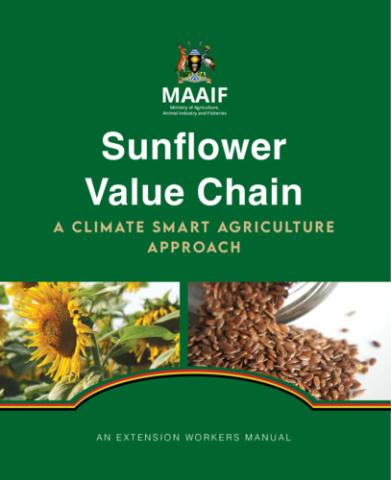Abstract
The manual is designed to assist the reader with information about sunflower value chain and its management in times of climate change. This manual takes the reader through a learning process on the importance, management, and benefits of sunflower crop. The different chapters describe the processes including production and post-harvest handling, marketing, challenges, and
options for addressing the challenges to methods and practices for addressing and /or preventing effects of climate change and climate variability. The manual closes with a demonstration of potential economic gains from engaging in climate smart sunflower production.
Chapter one focuses on a description of the significance of sunflower at global, regional, and local levels including the world production of sunflower, currently being over 35 million tonnes and current production in Uganda for 2021 at 282 thousand tonnes. Such information develops trainees’ appreciation of the importance of the crop and its value chain. While Chapter two introduces and describes the concept of climate change and also describes numerous technical processes that include climate smart field management processes and practices including pests and diseases and their management. This information is explained at length to enable readers appreciate and understand underlying reasons for specific practices and timing of
activities.
The detailed information on climate smart practices will require the reader to identify practices that are applicable to the setting and situation of the user. However, it was deemed important to include a whole array of practices, knowing that production environments are different and dynamic. The manual is concluded with a section on potential financial benefits that can be realised through climate smart production of sunflower and a description of how these can be calculated. It is critical for the extension service providers and learners to appreciate the dynamism of this information and make provision for adjustments based on the prevailing settings.

